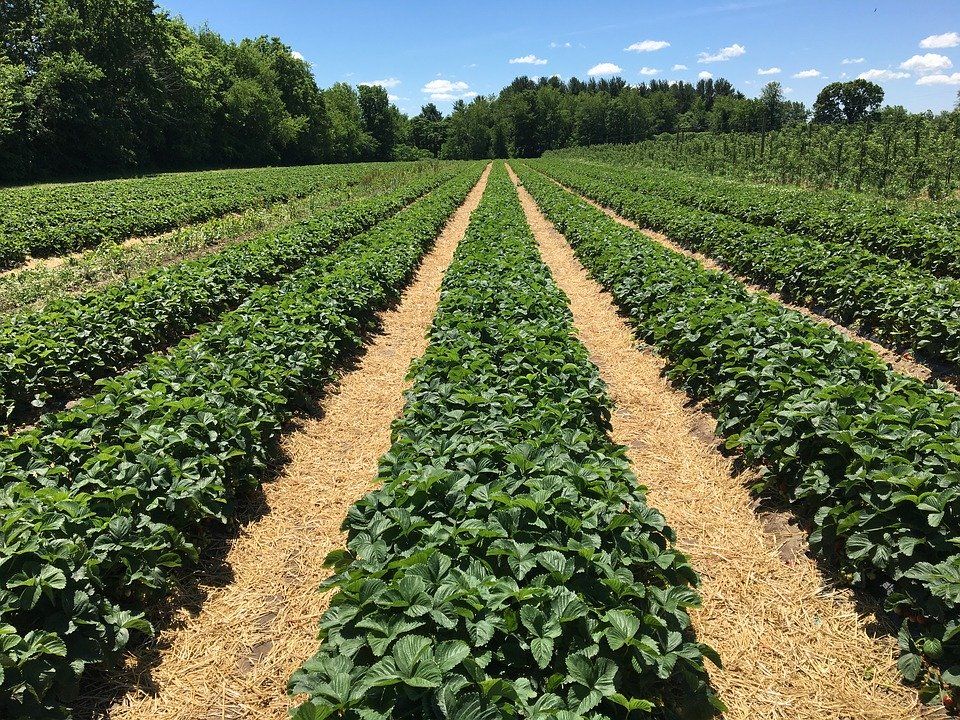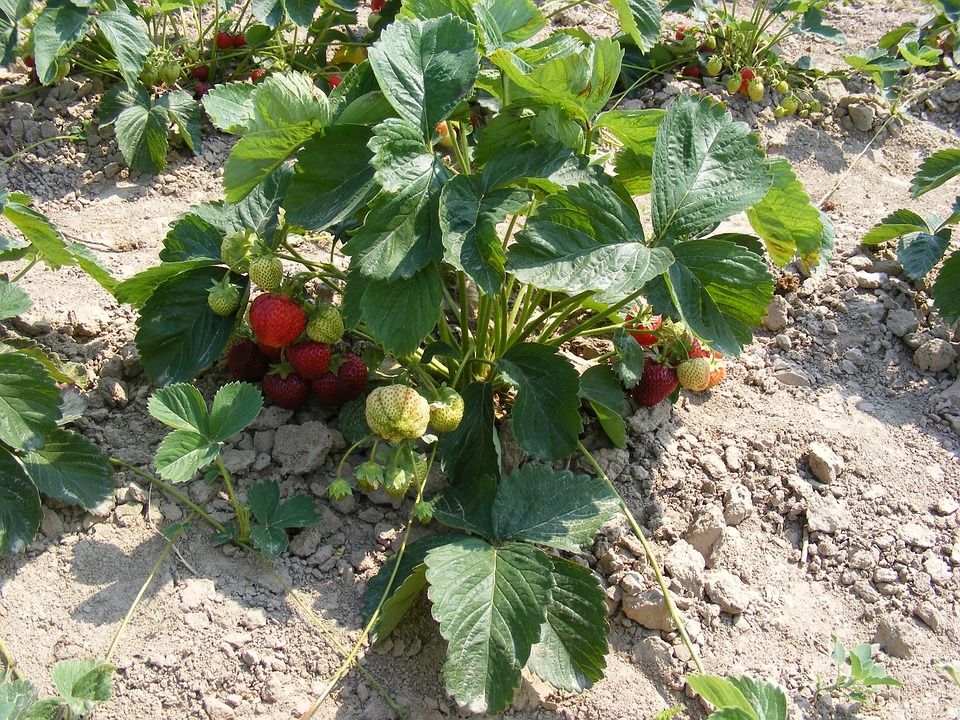Strawberry Bush Care: How to Plant Strawberries and Grow Them
You don’t need to be a skilled gardener to grow strawberry plants that produce mouth-watering fruits. Anyone with time on their hands and some basic knowledge can do it. Strawberry crowns, mixing soil, and liquid fertilizer are all you need to have your very own strawberry patch.
As usual, the devil is in the details. With so many strawberry varieties to choose from and the way the planting beds need to be prepared, you got your work cut out for you. This guide walks you through the process of growing and caring for strawberry plants.
Strawberry Varieties
The first question that you face when you think of growing strawberries is which type? Some strawberry varieties produce more fruits than others.
To simplify things, we can classify strawberries into three types:
- June-bearing strawberries: they usually produce fruit once a year during June. The buds first appear in the fall but it takes to the next spring for the flowers to show up. Then within three weeks in June, the fruits all grow and ripen. The runners appear soon after during the dog days of summer.
- Everbearing strawberries: these types produce fruits three times a year. The first crop is in the spring and is often a big one. Another one is early summer and then the last one in late summer or early fall which is as plentiful as the spring crop. Buds show up in the fall to produce the spring crop and then again in the summer to produce the summer and fall crops.
- Day-Neutral strawberries: the day length doesn’t impact the growth of buds, flowers, or fruits. As long as you provide steady temperatures between 35 and 85 degrees Fahrenheit, the strawberries will happily keep producing fruits. Once the first frost appears, the plant becomes dormant. The crops, however, are not as bountiful as the June-bearer types.
So which one is the best strawberry variety for your garden?
Fruit-wise and considering their ease of care and maintenance, we’d recommend you go with the June-bearer strawberries.
How to Plant Strawberries
One of the trickiest aspects of growing strawberries in your garden is bed preparation.
Besides containers, which are by far the easiest, you can grow a patch of strawberries in one of four ways.
- Matted Rows: This method works best for June-bearers. Plant the strawberries in rows keeping about a 2-foot distance between each plant. The rows are 4 feet apart from each other. This distance allows the runners to spread in a one and a half feet radius creating a solid mat.
- Hill Rows: Use hill rows if you live in the Southern parts of the country where the weather is warm. Make a single hill bed about 10 inches higher than the rest of the garden and plant the strawberries one-foot apart in three rows. It’s best suited for evergreen strawberries since they don’t have runners.
- Solid Beds: Ideal for a small patch or if you don’t have a big garden. Plant the strawberries in rows 2 feet apart with just 14 inches between each plant. You won’t be able to walk between the rows as the mat of strawberry runners is too solid. Cover the plants with wheat straws to protect them against the frost. Keep off the mulch until the ground is frozen to allow the strawberry plant to harden up.
- Containers: You don’t have to worry about rows and giving the runners enough space here. Just place the container in a spot that gets about 6 hours of sunlight every day. You can use a shallow container since the plants only need about 8 inches of soil for their roots to grow. Make sure the container has holes for drainage at the bottom and allow the topsoil to go dry before you water the plant. You’ll need to change the soil and the plants when they become less productive.
How to Grow Strawberry Plants
Now that you got your bed well prepared, it’s time to plant your strawberries.
Choose disease-resistant plants to save you the hard work that goes into caring for them strawberries. Also, keep in mind that the quality of the fruits diminishes over time. It’s better to plant new strawberries every year for good crops.
Here’s how to grow strawberries in easy steps.
- Once the last frost is over and the land is easy to work, plant your strawberries keeping the distances we mentioned in the above section.
- Raise the bed in rows as discussed to improve drainage.
- Add aged compost that you worked on months in advance. Use more compost if you have clay soil. Sandy soil doesn’t need much compost.
- Make sure the pH levels are between 5.5 to 7.
- Plant the strawberries by rotation. Allow the soil at the patch time to rest before you plant strawberries there again.
- Trim the bushy roots. They shouldn’t be longer than 8 inches when you plant them.
- Dig deep and wide holes to accommodate the whole rootball without squeezing it in.
- Don’t cover the crown since that’s where the leaves and runners grow. Both the flowers and fruit need to be exposed to the sun.
- Water the plants and keep the soil around the base moist until the roots hold.
- Cover the beds with mulch to improve water retention.
How to Care for Strawberry Plants
With the plant growing, you need to keep a watchful eye on birds and weed. In general, we can break the maintenance and care work into the following
General Care
You do this work from early spring until late fall. Make sure to cover the soil with shredded leaves or pine needles to prevent weed growth. Since water and moisture are important for strawberries, don’t neglect irrigation. The plants need about one inch of water every week.
Fertilizers are an important part of a bountiful crop. Use an all-purpose fertilizer when the flowers are in full bloom. Fruits usually appear about 4 weeks after fertilization. It’s also recommended to pluck the flowers in the first year to stop the plant from producing fruits. This encourages it to grow stronger roots that improve the yield in subsequent years.
Use nets to cover the rows during flowering and fruit production. Birds love strawberries as much as we do. And don’t forget to remove the daughter plants. They don’t produce as good crops as the first generation.
Winter Care
Even though the perennial strawberry plants go into dormancy once the fall is over and the weather changes, that doesn’t mean that your job is over.
To ensure that the plants flower and produce fruits the next spring you need to follow these steps.
- When the temperature drops to the low twenties, crop the plant’s foliage to about one inch.
- Wait for the soil to freeze then add about 4 inches of mulch. Use organic material to protect the plant during the winter months.
- For colder regions, use more mulch to insulate the plants.
- Don’t water the soil. The cold weather has enough moisture to give the plant sufficient water.
- When the last frost has passed, remove all the layers of mulch.
Pest Control
As with most plants that produce fruits, you need to be vigilant as far as pests are concerned. Unlike birds that are easily deterred with a mesh over the rows of strawberry plants, pests are quite invasive.
Some of the bugs to watch out for include
- Spider mites
- Japanese beetles
- Powdery mildew
- Gray mold
- Slugs
Weed is often a big attraction to insects. So keep the beds weed-free. Use organic mulch to protect against weed growth and the spread of bugs. Use sand to fend off slugs and pine needles to keep other bugs at bay.
Japanese beetles are not easily deterred with mulch. Use neem oil or pureed garlic. The smell of either of those is enough to keep most pests including the Japanese beetles away from your strawberry patch.
How to Harvest Strawberry
It takes the strawberry fruits between 4 to 6 weeks from flowering to become ready to harvest. The berries need to be ripe on the plant before you pick them up. Don’t pick green fruits since they’re not edible. Collect the red berries once every three days.
Be careful not to damage the berry when harvesting. Always pull it by the stem; never grab the berry itself. June-barriers offer the most abundant crops of all the strawberry varieties.
They harvest season lasts for three weeks every year. By the end of it, you should have plenty of red strawberries to make your jam and strawberry pies.

